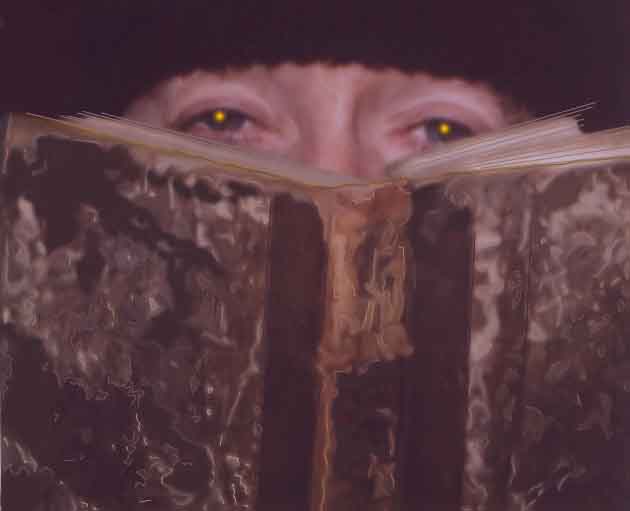









ELIZABETH SHATFORD
[First published as a catalogue essay called DORIC COLUMN for a brochure that accompanied Elizabeth Shatford's 1985 Mount Saint Vincent University Art Gallery exhibition in Halifax, Nova Scotia.]
"Around the Parthenon, lie shattered columns and weather-worn stones... These broken pieces of Ictinus' building form the basis for the group of paintings in this exhibition entitled Doric Column..." -Elizabeth Shatford
If a singular image of the most highly publicized art motifs of the 80s were possible, it might be a skull atop a Greek column: an image of classically-ordered death which welds human bone to architectural ruin. Some of these works are seen by critics as hackneyed ciphers of blank social conscience, sentimentalism and regression. To others, the revival of ancient themes and techniques is a healthy sign of a return to roots as well as implied criticism of Modernist assumptions about authenticity and originality.
Since the early 70s, Elizabeth Shatford has quietly dealt with many of the issues of neoclassicism or post-modernism in the paintings, drawings, prints, sculptures of her Doric Column series. The series has involved a slow working out of a number of themes connected to the Parthenon "...that absolute home base of classicism..." (Joseph Masheck).
What leavens the loaf in Shatford's work is her eccentric take on the Greek mystique, as exemplified in work's like Tatlin's tooth, a plaster chunk inspired by bits and pieces at the base of the Parthenon; Doric Column Soft Sculpture, which has resonances in Claes Oldenburg, Greek architecture, fibre work, and surrealism; and the painting Old Town Clock.
The Town Clock is Halifax's most photographed building and an example of the neoclassicism of the early 1800's as practiced by colonials. Its flimsy, decorative pillars prop up a clock visible to the bulk of local business people. No doubt an idea of classical order was explicitly linked in the minds of the builders with an efficient ticking of commerce. Like much of Georgian neoclassicism, the Old Town Clock building fits into Joseph Masheck's characterization of contemporary post-modern architecture:
Actually, much 'post-modernism' is marked by a kind of Deco-recoco infatuation with out-of-scale classical detail illiterately disengaged from the classical grammar for the fun of high fashion.
It's all there in Shatford's painting, and neither the building nor the painting loses any of their charm because they rehash an ancient subject like Greek Classicism.
Shatford's 'post-modern' works are closely linked to her minimalist paintings, drawings, and collographs begun in the early 70s. They derive themselves from the structural elements of the Parthenon, its tryglyphs, its metopes (many now in the British Museum) and its marble fragments scattered around the Acropolis. Hard-edged and one-shot works, usually made without evidence of indecision or hesitation, these paintings and drawings adapt the vocabulary of minimalism. Broad areas of flat colour connect painting to architecture with a logic similar to van Doesburg, that is, as architectural structure transposed onto canvas in terms of architectonic , flat forms and unmodulated colour.
The choices about colour and structure are made in studies (several of which are included in this exhibition) and not in the final work. Shatford's method involves searching through compositional problems as if a mysterious order of values, proportion and aesthetics might be divined.
Postscript
There are tantalizing links between Elizabeth Shatford's neoclassical art and work as curator of Mount Saint Vincent University Art Gallery's Slide Registry of Nova Scotia Women Artists. The Slide Registry was formed in 1975 - International Women's Year. Shatford has maintained the Registry ever since (1985), and it has grown into an instructive example of self-documentation by a community. Membership in the the Registry is open to any woman artist born and/or living in Nova Scotia. Up to six slides from each artist are arranged in carousels. A file of biographical information accompanies the slides, and a cross-indexing system allows for easy consultation. Shatford's longstanding care of the 1000 slides by 175 artists complements her classicizing tendencies in painting and sculpture, where a mythology of order associated with the ancient Greeks as well as the Enlightenment encyclopedists is mingled with the neoclassical practices of post-modernist aesthetics.
Note: Joseph Masheck, "Judy Rifka and 'Post-modernism' in architecture" Art in America, Dec. 1984, 148-163
 |
|